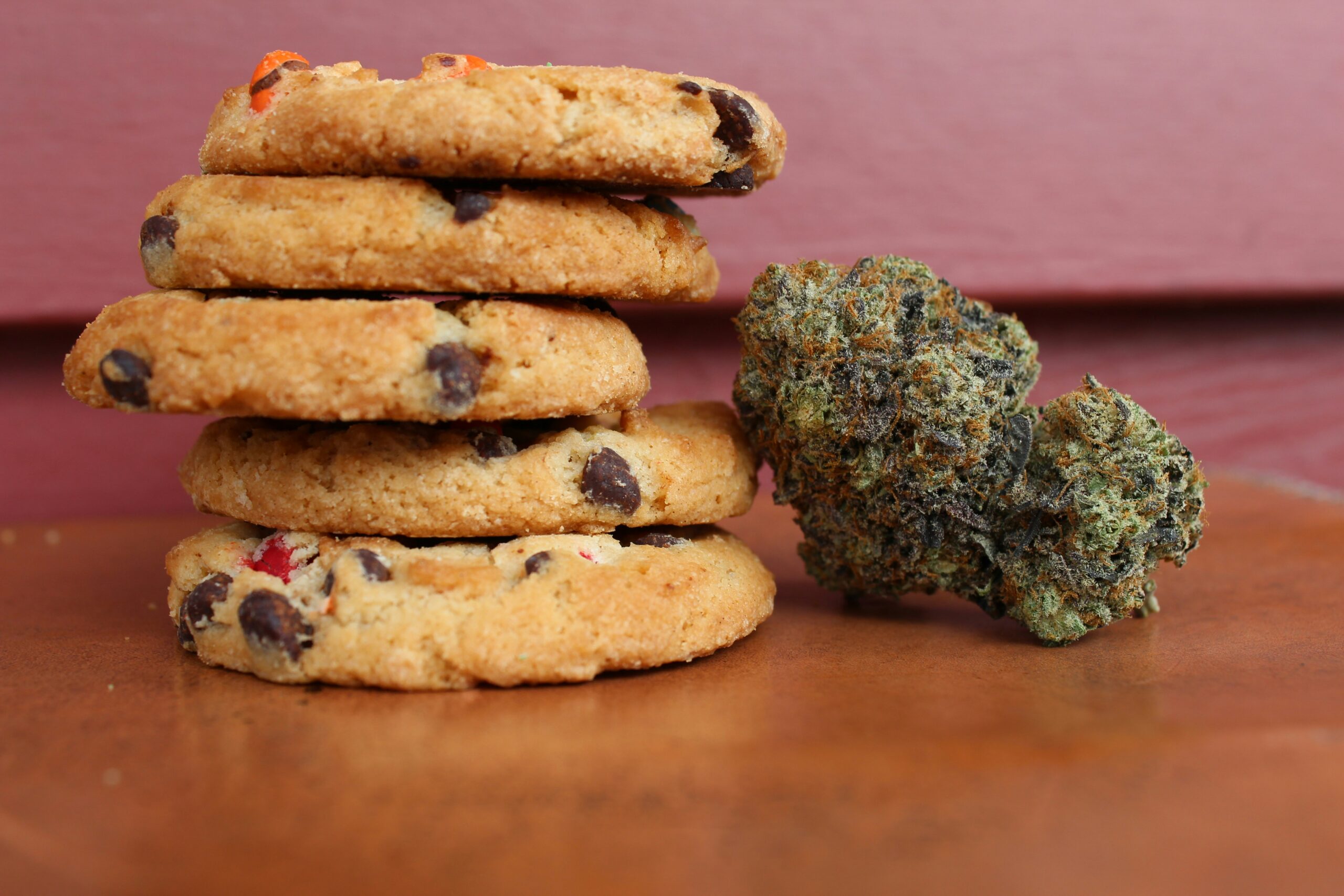The Hidden Dangers of Cannabis: A Comprehensive Look at Its Different Forms

Introduction:
Cannabis has firmly rooted itself in modern society, with many hailing it as a natural remedy for various ailments and a recreational substance. However, beneath its widespread popularity lies a complex web of potential dangers that users often overlook. Understanding the different forms of cannabis is crucial for anyone considering its use, whether for medical or recreational purposes. This article delves into the various forms of cannabis, shedding light on their darker sides, and highlighting why caution should be exercised.
1. Understanding Cannabis
Cannabis, derived from the Cannabis sativa and Cannabis indica plants, has been used for centuries. These plants contain natural compounds known as cannabinoids, with the most well-known being tetrahydrocannabinol (THC) and cannabidiol (CBD). THC is responsible for the psychoactive effects that make users feel “high,” while CBD is often touted for its therapeutic properties.
However, the distinction between Cannabis sativa and Cannabis Indica is not as clear-cut as many believe. Both species contain varying levels of THC and CBD, and their effects can be unpredictable. This unpredictability poses significant risks, especially for individuals with mental health issues or those prone to substance abuse. The natural plant-derived cannabinoids, though often marketed as safe, can lead to dependence and adverse mental health effects, such as anxiety, paranoia, and even psychosis.
2. Dried Flowers
Dried cannabis flowers are the most traditional form of cannabis, commonly consumed by smoking through joints, blunts, or pipes. While this method may seem harmless to many, it carries a host of negative consequences.
Smoking dried flowers exposes the lungs to harmful toxins and carcinogens, much like tobacco smoke. Long-term use can lead to respiratory issues, chronic bronchitis, and an increased risk of lung infections. Furthermore, the potency of dried flowers has increased significantly over the years, with THC levels now reaching alarming heights. This elevated potency heightens the risk of addiction, impairs cognitive functions, and exacerbates mental health disorders. Regular users may also experience a diminished ability to feel pleasure from everyday activities, leading to a downward spiral of dependence.
3. Cannabis Extracts
Cannabis extracts represent a concentrated form of cannabis, boasting significantly higher potency levels than dried flowers. While these extracts may offer more intense effects, they also amplify the associated risks.
Hashish
Hashish, or “hash,” is one of the oldest cannabis extracts, made by compressing the plant’s resinous trichomes. Although it may seem like a natural and relatively mild form of cannabis, hashish is far from harmless. Its potency far exceeds that of dried flowers, increasing the likelihood of overdose, particularly among inexperienced users. The concentrated levels of THC in hashish can lead to severe anxiety, paranoia, and hallucinations, posing a serious threat to mental health.
Butane Hash Oil (BHO)
Butane Hash Oil (BHO) is a highly potent cannabis extract produced using butane, a highly flammable solvent. The extraction process itself is dangerous, with numerous reports of explosions and injuries occurring during its production. The resulting product, BHO, contains extremely high levels of THC, often exceeding 80-90%. This level of potency can cause intense psychoactive effects, leading to paranoia, panic attacks, and in some cases, psychosis. Moreover, the use of butane in the extraction process can leave behind harmful residues, posing additional health risks to users.
Shatter and Wax
Shatter and wax are two popular forms of cannabis extracts known for their high potency and unique textures. Shatter is a brittle, glass-like substance, while wax has a softer, more malleable consistency. Both are typically consumed through vaporisation or dabbing, methods that involve inhaling the vapor produced by heating the extract.
The high THC content in shatter and wax can lead to an overwhelming “high,” often resulting in extreme anxiety, paranoia, and loss of control. The practice of dabbing, in particular, is associated with a rapid and intense onset of effects, which can be dangerous for inexperienced users. Additionally, the process of producing shatter and wax often involves the use of solvents like butane, raising the risk of contamination with harmful chemicals.
4. Edibles
Cannabis edibles have gained popularity for their ease of consumption and discreet nature. These products come in various forms, including baked goods, candies, and beverages, making them appealing to a wide audience. However, the consumption of edibles presents significant risks that are often underestimated.
One of the primary dangers of edibles is their delayed onset of effects. Unlike smoking or vaping, where the effects are felt almost immediately, edibles can take anywhere from 30 minutes to two hours to kick in. This delay often leads users to consume more than intended, resulting in an overdose. The effects of an edible overdose can be severe, including extreme anxiety, paranoia, nausea, and vomiting. In some cases, users may experience hallucinations and a sense of impending doom, which can be terrifying and disorienting.
Furthermore, the potency of edibles is notoriously difficult to control. Even experienced users may find it challenging to gauge the right dosage, leading to unpredictable and potentially dangerous outcomes. The high THC content in edibles can also exacerbate mental health issues, particularly in individuals prone to anxiety and depression.
5. TINCTURES
Cannabis tinctures are concentrated liquid extracts made by soaking cannabis flowers in alcohol or another solvent. They are typically administered sublingually (under the tongue) or added to food and beverages. While tinctures are often marketed as a safer alternative to smoking, they come with their own set of risks.
The potency of tinctures can vary widely, making it easy to consume too much. This can lead to a range of negative effects, including dizziness, nausea, and paranoia. Moreover, because tinctures are absorbed quickly into the bloodstream, the effects can be intense and overwhelming, particularly for those who are new to cannabis.
Another concern with tinctures is the potential for alcohol dependence, especially in individuals with a history of substance abuse. Since many tinctures are made with high-proof alcohol, regular use can contribute to the development of alcohol-related health issues, including liver damage and addiction.
6. OILS
Cannabis oils are another popular form of concentrated cannabis, often used for cooking or direct consumption. These oils can be made from either THC-rich cannabis or CBD-rich hemp, with varying effects depending on the cannabinoid content.
While cannabis oils are sometimes promoted for their health benefits, they are not without risks. THC-rich oils, in particular, can lead to the same adverse effects as other high-potency cannabis products, including anxiety, paranoia, and cognitive impairment. Furthermore, the use of cannabis oils in cooking can make it difficult to control the dosage, increasing the risk of accidental overdose.
CBD oils, while often considered safer, are not without potential side effects. High doses of CBD can cause drowsiness, dry mouth, and gastrointestinal issues. Additionally, because CBD can interact with certain medications, individuals taking prescription drugs should be cautious when using CBD oils.
7. VAPES
Vaping has become a popular method of consuming cannabis, particularly among younger users. Vaporisation involves heating cannabis or cannabis extracts to a temperature that releases cannabinoids in the form of vapor, which is then inhaled. While vaping is often marketed as a healthier alternative to smoking, it carries its own set of risks.
One of the main concerns with vaping is the potential for lung damage. The inhalation of vaporised oils, particularly those containing THC, has been linked to a condition known as EVALI (E-cigarette or Vaping Product Use-Associated Lung Injury). This condition can cause severe respiratory symptoms, including coughing, shortness of breath, and chest pain, and in some cases, it can be fatal.
Additionally, the ease of use and discreet nature of vaping can lead to overconsumption, particularly among inexperienced users. The rapid onset of effects, combined with the high potency of many vaping products, increases the risk of adverse reactions such as anxiety, paranoia, and dizziness.
8. TOPICALS
Cannabis topicals are products applied directly to the skin, such as creams, salves, and balms. They are often used for localised pain relief and are marketed as a non-psychoactive option for cannabis users. However, while topicals may not produce the “high” associated with other forms of cannabis, they are not entirely without risks.
One of the primary concerns with cannabis topicals is the potential for skin irritation and allergic reactions. Some individuals may be sensitive to the ingredients used in these products, leading to redness, itching, and discomfort. Additionally, the long-term effects of regular topical cannabis use are not well understood, raising questions about their safety with prolonged use.
Another issue is the potential for contamination with harmful substances. Because topicals are applied directly to the skin, any contaminants in the product can be absorbed into the body, potentially leading to adverse health effects.
9. SYNTHETIC CANNABINOIDS
Synthetic cannabinoids, often sold under names like K2 or Spice, are lab-made chemicals that mimic the effects of natural cannabinoids. However, these substances are far more dangerous than their natural counterparts.
Synthetic cannabinoids are known for their unpredictable and often severe effects. Users may experience extreme anxiety, paranoia, hallucinations, and violent behaviour. In some cases, synthetic cannabinoids can cause seizures, heart attacks, and even death. Unlike natural cannabis, synthetic cannabinoids have no medical benefits and carry a much higher risk of addiction and overdose.
Moreover, because synthetic cannabinoids are often sold as “legal” alternatives to cannabis, many users mistakenly believe they are safe. This misconception can lead to dangerous experimentation, particularly among young people and those with limited knowledge of the risks involved.
Conclusion:
As cannabis continues to gain acceptance in society, it is crucial to recognise and understand the potential dangers associated with its various forms. From the respiratory risks of smoking dried flowers to the unpredictable effects of edibles and the life-threatening dangers of synthetic cannabinoids, the darker side of cannabis use is a reality that cannot be ignored.
While some individuals may find relief from certain medical conditions through cannabis use, the risks often outweigh the benefits, particularly for recreational users. It is essential for users to approach cannabis with caution, armed with knowledge of its potential harms, and to consider the long-term implications of their choices. Responsible use and a thorough understanding of the different forms of cannabis are key to minimising the risks and avoiding the potentially devastating consequences of this powerful substance.
If you or a loved one is struggling, explore the wide range of Rainford Hall’s services designed to empower individuals and families. From Family Interventions to Enhanced 12-Step Programs, we’re here to guide you every step of the way.
Seeking Professional Help?
If you are concerned about your own drug use or suspect someone you care about might be struggling with addiction, don’t hesitate to seek professional help. There are many resources available to support you on your journey to recovery. Here are some additional resources:
- National Drug Helpline (UK): 0800 802 2312 (Free 24/7 confidential helpline)
- Steps Together Rehab
https://stepstogether.co.uk/
https://rainfordhall.com/ - NHS – Addiction Support:
https://www.nhs.uk/live-well/addiction-support/drug-addiction-getting-help/ - Talk to Frank: Provides information and support for parents about their children and drugs
https://www.talktofrank.com/
Share with:





